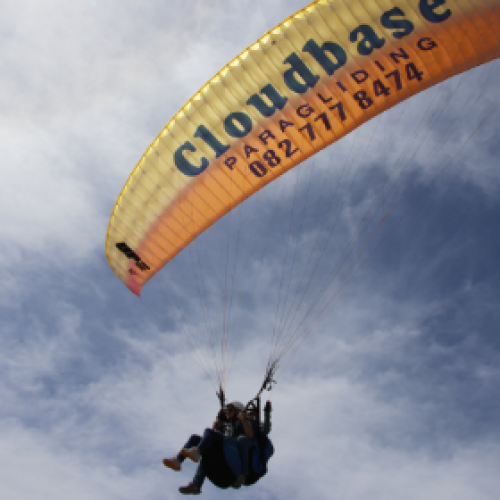Adapting to the EN system
As humans, our natural instinct is to resist change, so when the new EN certification for paragliders arrived, we resisted the A, B, C and D class and insisted on still referring to the DHV system of a ‘1-2’ or a ‘2’. Today, seven years later, as dealers, we still get requests from pilots asking for a DHV 2 wing!
The problem with this is that a majority of pilots simply equate DHV 1 with an EN A class, a DHV 1-2 with a B class and so on, and it is not that straight forward. There is no doubt that the concept is very similar, as the definitions of EN and DHV classes in the below table show. However, the classes do not exactly correlate, and hence re-education of where your wing sits with respect to pilot ability is required.
|
As a .general definition ‘Certification’ refers to the confirmation of certain characteristics of an object, person, or organisation. This confirmation is often, but not always, provided by some form of external review, education, assessment, or audit. With regard to our Paragliders this means a number of flight, and strength tests.
Each glider is put through a number of flight tests and rated accordingly depending on the flight characteristics of the wing during the test. For example:
| Manoeuvre Weight 85 Classification Weight 110 Classification | ||||
| Pitch stability exiting accelerated flight | A | A | ||
| Dive forward angle on exit | Dive forward less than 30° | A | Dive forward less than 30° | A |
| Collapse Occurs | No | A | No | A |
| Pitch stability operating controls during accelerated flight | A | A | ||
| Collapse occurs | No | A | No | A |
The flight characteristics therefore describe the glider’s tendency to recover or to get out of control and fall out of the sky.
For example if you read the description for ‘C’ class gliders, what this is telling you is that with one of these gliders you could reasonably expect ‘dynamic reactions to turbulence’. A dynamic reaction to turbulence would be, say, getting some choppy air on the edge of a thermal and suddenly finding you have a 30% collapse and you need to react accordingly. The description goes on to say ‘Recovery to normal flight may require precise pilot input‘. What this means is that there is a strong likelihood that you need to input the correct actions at precisely the right time to stop a cascade of other events.
The aim of the EN norm implementation was to bring together tests which are unique and to create a repeatable standard that is documented on video. The EN certification for paragliders comprises of 24 manoeuvres, each of which is separated into the 4 classifications. EN certification is controlled by ISO.
Below we have taken the EN classes, and broken them down into two levels, within each classification.
A. Beginners
A1 Especially for training, wings for schools, exercises and the first flights.
A2 Good passive safety, good handling and excellent first wing with guaranteed fun.
B. Intermediate
B1 This is the classic basic intermediate wing with high safety, good handling and sufficient performance. A glider for life!
B2 For some years this level has improved performance wise, it should be good safety combined with good handling and performance. But the general feel from the top pilots is that these wings have become a little more demanding and maybe a little too much for the average Joe Soap pilot.
C. Sports class
C1 Good natured sports class wings, with good safety combined with performance. The original Sports class definition.
|
|
||||||||||||||||||||||
C2 Discerning sports class wings for top XC pilots with high flight numbers logged, similar to the DHV 2-3 class. A bridge into the EN D class.
D. Performance wing
D1 Demanding high performance wings, very experienced pilots.
D2 Certified 2-liner gliders, extremely demanding. Until recently this was the competition class wing, ie the highest certified wing.
CCC Civl Competition Class
This is a new class bought in this year specifically for category 1 events, and is an article on its own, read your next Go Fly!
To help you understand where some of our wings may lie in this system below is a table of gliders rated by German test pilots against this slightly more diverse system. The table is not all-encompassing.
To truly understand where your glider sits with regards its flight characteristics download the relevant flight test report, and see what classification it received for the different manoeuvres, and focus on the ones you feel are a priority with regard to your skill level.
It is possible to have two gliders both rated as an EN B for example, but one will have a majority of its flight characteristics rated as ‘A’ with only one ‘B’, whereas the other will have a majority of its flight characteristics rated as ‘B’, therefore the second glider is a little bit more ‘hot to handle’!
The best thing to do before buying a glider is to actually speak to your dealer as he/she should be knowledgeable of the performance of each glider in the range that they sell, and should be able to advise you on the different flight characteristics the wing has, and depending on your skill level advise you as to which glider is best for you.
The manufacturers are also giving very concise descriptions to which pilot they are aiming their gliders at, so read up on their websites.
Sandy Cochepain, ladies paragliding World Champion, once said that ‘a majority of pilots do not fly their gliders to 100% before moving up to a new class of glider’.

Comments